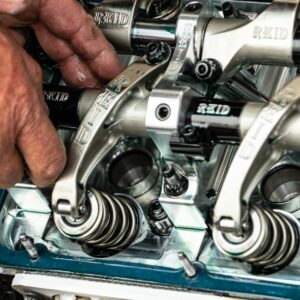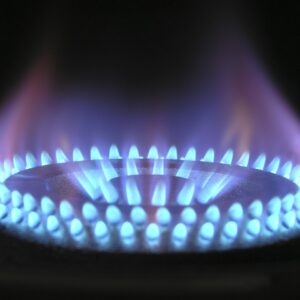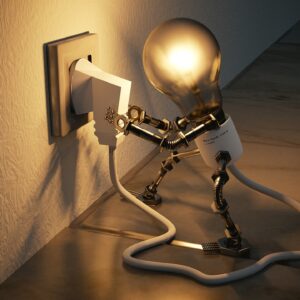If you’re going to be working with power equipment, it’s important to understand the safety features that are in place to keep you and those around you safe. As they say, ‘an ounce of prevention is worth a pound of cure.’
In other words, taking the time to learn about and use the safety features of your equipment can prevent accidents, injuries, and even fatalities.
When it comes to power equipment, there are a number of safety features you need to be aware of. These include guards and shields, emergency stop buttons, warning labels, and more.
By understanding how these features work and why they’re important, you’ll be better equipped to operate your equipment safely and effectively. So, let’s dive into the world of power equipment safety and learn how to keep yourself and others safe while on the job.
Guards and Shields
You’ll want to make sure you don’t accidentally remove or bypass the guards and shields on your power equipment, as they’re there to protect you from getting hurt.
Guards and shields are designed to prevent accidental contact with moving parts and flying debris. Material selection is important for guards and shields, as they need to be durable enough to withstand impact and wear. Maintenance requirements may include cleaning debris, checking for damage, and replacing worn parts.
It’s crucial to always inspect the guards and shields before operating your power equipment. Make sure they’re securely fastened and in good condition. If you notice any damage or missing parts, replace them before using the equipment.
Remember, the guards and shields are there for your protection, so never remove or bypass them. By following the manufacturer’s recommendations for material selection and maintenance, you can ensure that your guards and shields will provide the necessary protection for years to come.
Emergency Stop Buttons
If you ever find yourself in a dangerous situation while operating machinery, hitting the emergency stop button is the quickest way to shut down the equipment and prevent further harm.
Emergency stop buttons are designed to immediately shut off power to the equipment when pressed. They’re usually located within easy reach of the operator and are labeled with a distinctive red color and the words ’emergency stop’ or ‘e-stop.’
It’s important to properly install and maintain emergency stop buttons to ensure they function correctly when needed. Installation guidelines often include the placement of the button, wiring, and testing procedures.
Maintenance procedures may include regular inspections for damage or wear, replacing any faulty components, and testing the function of the button. Overall, emergency stop buttons are a crucial safety feature in power equipment and shouldn’t be overlooked.
Warning Labels
The importance of warning labels can’t be overstated. They serve as a visual reminder of potential hazards and help prevent accidents. Safety regulations and legal requirements dictate that power equipment must have appropriate warning labels. These labels usually include information such as safety instructions, warning symbols, and cautionary statements.
It’s crucial to read and understand warning labels before using power equipment. They provide vital information about the equipment’s potential hazards, such as sharp edges, hot surfaces, and electrical shock. By following the instructions and warnings on the labels, you can ensure your safety and prevent serious accidents.
Remember, warning labels aren’t just for decoration; they’re there to keep you safe.
Importance of Proper Usage
Make sure you’re using your power equipment correctly to get the most out of it and have a great experience. Proper usage not only ensures that your equipment works efficiently, but also promotes safety in your workplace.
When using power equipment, it’s important to follow the instructions in the manual, as well as any safety guidelines or warnings that the manufacturer has provided. Proper maintenance is also crucial for ensuring the longevity and safety of your power equipment. Regular cleaning and inspection will help prevent any potential hazards from arising.
Additionally, wearing protective gear, such as gloves, eye and ear protection, and hard hats, can prevent injuries and accidents while using your power tools. Remember, safety should always be your top priority when working with power equipment.
Training and Education for Safe Operation
Learning how to properly operate power tools is like learning to ride a bike – with the right training and education, you can confidently and safely use your equipment.
One way to ensure that you have the necessary knowledge and skills is through certification programs. These programs provide a structured curriculum that covers the fundamentals of power tool operation, including safety protocols, equipment maintenance, and troubleshooting. By completing a certification program, you can demonstrate your competence to potential employers and customers, and feel confident in your ability to operate your power tools safely and efficiently.
In addition to certification programs, proper maintenance is also essential for safe power tool operation. Regular maintenance not only extends the lifespan of your equipment, but it can also prevent accidents and injuries.
Before using any power tool, inspect it for any visible damage or defects. Replace any damaged parts or components immediately, and ensure that all safety features are functioning properly. Additionally, regularly clean and lubricate your equipment, and store it in a dry, secure location when not in use.
By taking these simple steps, you can ensure that your power tools are always in optimal condition, and reduce the risk of accidents and injuries.
Frequently Asked Questions
What are the consequences of using power equipment without proper safety features?
Using power equipment without proper safety features can lead to serious consequences. It’s important to always wear the appropriate safety gear, such as gloves, goggles, and helmets, to protect yourself from potential injury.
Ignoring safety measures can result in accidents like electrical shock, burns, or even amputations. It’s crucial to take the necessary precautions before operating any power equipment to ensure your safety and the safety of those around you.
Don’t let a lack of safety precautions lead to irreversible damage or injury. Always prioritize safety when working with power equipment.
How do I maintain the safety features of my power equipment?
To keep your power equipment running safely and efficiently, it’s important to perform regular inspections and follow a maintenance checklist.
Check for signs of wear and tear on the safety features such as guards, shields, and emergency stops. Replace or repair any damaged parts immediately.
Keep the equipment clean and clear of debris and lubricate moving parts as needed.
Follow the manufacturer’s recommended maintenance schedule and keep a record of all inspections and repairs.
By taking these steps, you can ensure that your power equipment remains safe to use and avoids any potential accidents or injuries.

Are there any legal requirements for having safety features on power equipment?
When it comes to power equipment, legal implications and industry standards dictate that certain safety features must be present. These requirements are put in place to protect both the operator and those in the surrounding area.
Failure to comply with these regulations can result in fines and legal consequences. It’s important to regularly check that all safety features are in working order and to make any necessary repairs or replacements.
Keeping up with these standards not only ensures compliance with the law, but also promotes a safe and efficient work environment.
What should I do if I encounter a safety issue while using power equipment?
If you encounter a safety issue while using power equipment, it can be a scary and dangerous situation. Your first priority should be to stop using the equipment immediately and assess the situation.
Don’t be afraid to report incidents or seek assistance from a supervisor or safety professional. Some common safety hazards include electrical shock, burns, and cuts.
Remember, it’s always better to be safe than sorry when it comes to your own well-being. So, if you encounter any safety issues while using power equipment, take swift action and seek help to prevent any further harm.
How can I ensure that my employees are properly trained in the safe operation of power equipment?
To ensure that your employees are properly trained in the safe operation of power equipment, it’s important to use effective learning techniques. This includes providing hands-on training, using visual aids such as diagrams and videos, and offering clear and concise instructions.
It’s also important to regularly review and reinforce safety procedures to ensure that they become second nature to your employees. By investing in employee training and utilizing effective learning techniques, you can help prevent accidents and ensure a safe work environment for everyone.
Conclusion
Now that you have a better understanding of the safety features of power equipment, it’s important to remember that accidents can still happen if proper precautions are not taken.
Always make sure guards and shields are in place before operating any equipment, and never remove them.
Emergency stop buttons should be easily accessible and tested regularly to ensure they’re functioning properly.
Warning labels should be read and followed carefully to avoid any potential hazards.
Remember, the most important aspect of using power equipment safely is proper usage.
Make sure you’re trained and educated on the equipment you’re using, and never operate it if you’re unsure of how to do so safely.
By following these guidelines, you can help prevent accidents and ensure a safe work environment.
So, stay alert, stay safe, and always prioritize your well-being.





